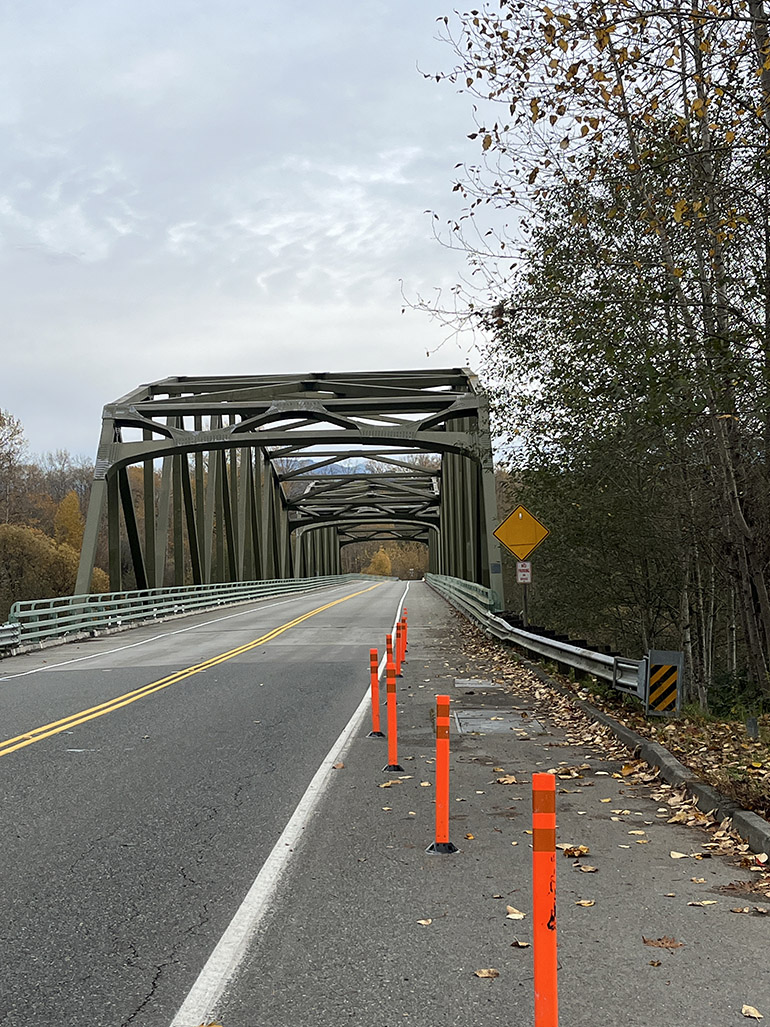NE Tolt Hill Road Slide Repair Project
Project completed in summer 2024

The temporary traffic signal on NE Tolt Hill Road was removed on September 18, 2024. Crews completed the replacement of the new retaining wall under the west approach of the bridge.
Overview
Road Services replaced the previous damaged retaining wall with a new deep retaining wall that is designed to prevent erosion and provides better protection for flood events. This project improves safety for travelers and restores the stability of soil under the west approach to the Tolt Bridge, over the Snoqualmie River near Carnation, WA.
King County removed the existing 55-foot-long gabion retaining wall and replaced it with an updated 80-foot-long soldier pile retaining wall. This shores up the soil under the southwest bridge approach and improve the stability of the nearby slope. This bridge is an important part of the east/west corridor in the Snoqualmie River Valley and a critical part of the flood evacuation route. The shoulder that was closed in March 2023 has reopened.
Project location
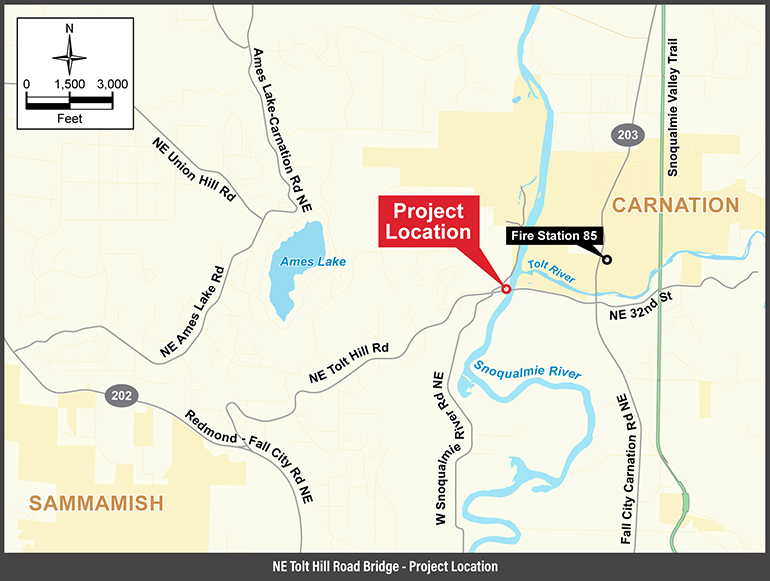
The active construction zone took place west of and under the bridge. Construction equipment was stored on one of the two lanes of the bridge. The Tolt Bridge is located over the Snoqualmie River to the west of Carnation, WA. View larger image (661KB)
Frequently asked questions
In February 2020, following a significant rainstorm, settlement and movement of the gabion wall was discovered, and engineers implemented survey and visual monitoring of the ground movements from that time. In addition, a real-time monitoring system was installed on the tilted wall and the west approach to the bridge to allow the engineers from their office to monitor the movement of the impacted area.
Gabion retaining walls are shallow walls built of rectangular wire mesh boxes filled with rock or other materials, then stacked in “cells.” They are most commonly used as retaining wall structures and can often be seen along the sides of roads and highways holding back cliffsides to retain soil.
Soldier Pile retaining walls are designed by geotechnical/structural engineers to prevent soil settlement, lateral movement, and erosion that can undermine an existing structure. During construction crews placed large steel piles in pre-drilled holes deep in the ground and then place panels between the piles.

Sample photo: gabion retaining walls are made of wire mesh boxes and filled with rocks.

Deep soldier pile retaining walls are built to prevent the lateral movement of soil.
Project photos
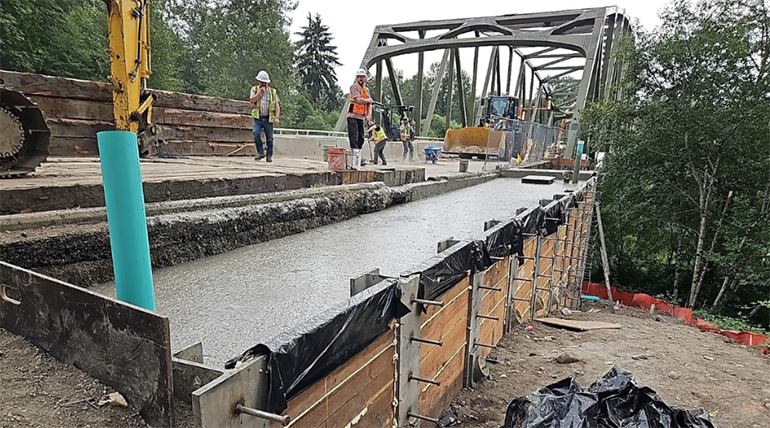
August 2024 – The final layer of lightweight concrete was poured to reinforce the area between the bridge and the steel soldier piles.

August 2024 – A geoscience consultant guides a steel rod through a drilled hole in the pavement on NE Tolt Hill Rd to ensure that the lightweight concrete filled the area beneath the pavement of the bridge.

August 2024 – A crewmember directs the first layer of lightweight concrete pour to fill and reinforce the space beneath the bridge. Lightweight concrete is made with lighter materials than traditional concrete.

August 2024 – Angled iron segments were installed to support timber laggings. Timber laggings are wood planks placed between the steel soldier piles to protect against impact, abrasion, and corrosion.
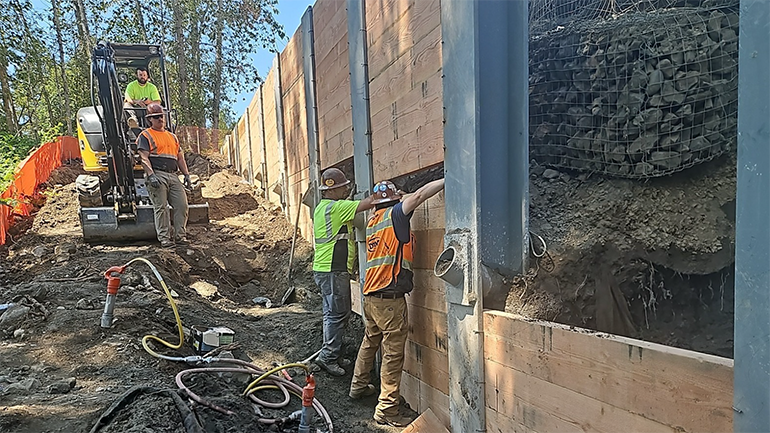
July 2024 – Crews place timber beams in between the soldier piles, which will retain the lightweight concrete that will be poured between the roadway and the piles.
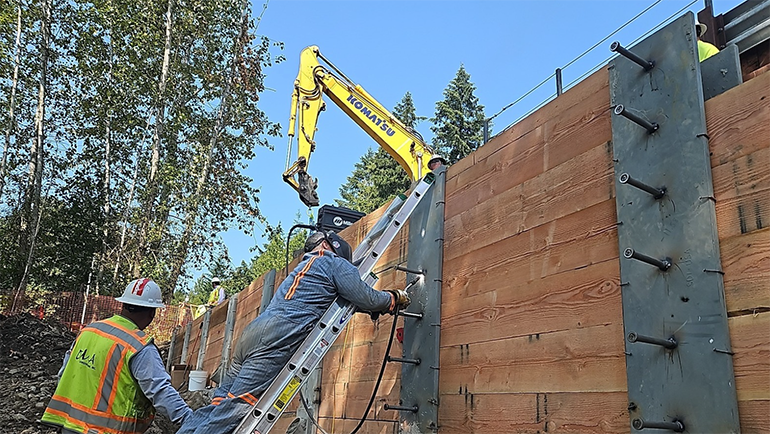
July 2024 – Metal studs are welded into the soldier piles, helping it to resist force and movement. These studs will also serve as an anchor to rebars that will be installed to support the outer wall.

July 2024 – The newly placed soldier piles will provide deep structural support and improve stability of the nearby slope.

July 2024 – A large drill, called an auger, drills into the soil below the bridge on NE Tolt Hill Rd to prepare for the new steel soldier piles.

May 2024 – The bridge is open to all traffic but requires temporary single lane closures at the west approach of the bridge. 24 hours a day, 7 days a week a portable traffic light is alternating two-way traffic into the one open lane.
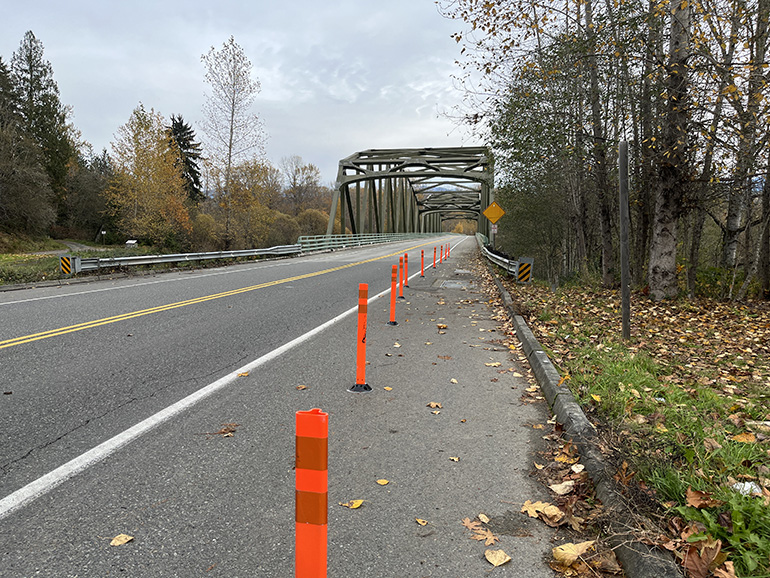
November 2023 – Orange traffic cones were in place to block vehicles from using the shoulder of the bridge directly above the existing wall.
November 2023 – Construction will require temporary single lane closures and will alternate two-way traffic into the one open lane using a portable traffic light. Once construction has concluded, the current shoulder restriction will be removed.

 Translate
Translate
